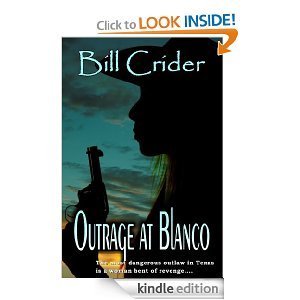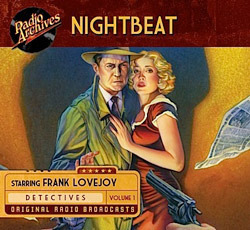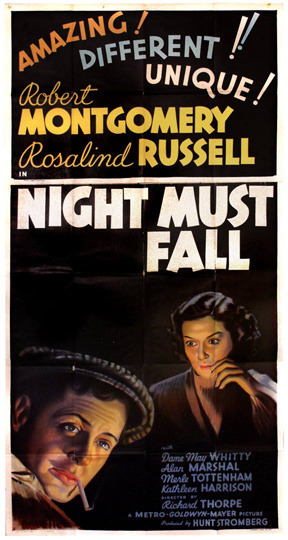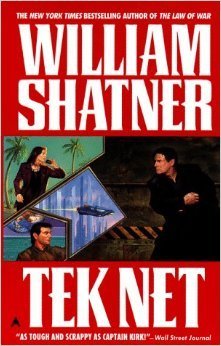Ed Gorman's Blog, page 101
February 9, 2014
Free for Kindle Today and Monday -- Two Days Only! Bill Crider OUTRAGE AT BLANCO
Free for Kindle Today and Monday -- Two Days Only! -- Spread the Word

This time it's for real! Amazon.com: Outrage at Blanco (Ellie Taine) eBook: Bill Crider: Kindle Store: Western action thriller in the tradition of Elmer Kelton and Louis L'Amour. The bank robbers killed Ellie Taine's husband. They didn't kill Ellie. That was their mistake. Now Ellie's going to make them pay.
Published on February 09, 2014 07:10
February 8, 2014
Amazon.com: Turn Left at Paradise eBook: Fred Zackel: Kindle Store: (lifted from Bill Crider)
PimPage: An Occasional Feature in Which I Call Attention to Books of Possible Interest

PimPage: An Occasional Feature in Which I Call Attention to Books of Possible Interest
Amazon.com: Turn Left at Paradise eBook: Fred Zackel: Kindle Store : Why would a man, after a massive heart attack, check himself out of the ICU just hours before he was due to be released, and then take off three thousand miles to the city of his birth – without telling his family why? San Francisco Homicide cop Max Kelly chases after his father. Bobbie Kelly hasn’t been back to his hometown for thirty-eight years. After generations of silence, what terrible family secrets will be revealed? Can a father and son find reconciliation after years of distrust and anger? Bobbie and Max have stirred up other troubles, too. After thirty-eight years a cop killer is stepping out of the shadows. Oh, the murders never stopped. And now Max and Bobbie are in the crosshairs. A family saga by the author of COCAINE AND BLUE EYES, MURDER IN WAIKIKI, and TOUGH TOWN COLD CITY. Cover by L. Zackel.
Published on February 08, 2014 17:35
a link from the great ken levine ZOMBEAVERS
Published on February 08, 2014 11:15
February 7, 2014
BRIAN GARFIELD’S TROOP OF HONOR by Fred Blosser
BRIAN GARFIELD’S TROOP OF HONOR by Fred Blosser
Except for an occasional nonfiction study or cable documentary about the Little Big Horn, writers and studios don’t seem to produce many books, movies, or TV shows anymore about the U.S. cavalry in the Old West. The last made-for-TV movie I can remember was BUFFALO SOLDIERS (1997), and the last feature film was Walter Hill’s GERONIMO: AN AMERICAN LEGEND (1993). In Hill’s movie, Wes Studi as Geronimo had less screen time than Jason Patric and Matt Damon as the two cavalry officers who chased the wily Apache chief. LT. GATEWOOD AND LT. DAVIS would have been a more accurate if less dramatic title.
In the 1960s, when a sufficiently strong paperback market still existed, Brian Garfield contributed a couple of notable novels to the genre. This was early in his career when he was writing Westerns at an amazingly prolific pace, before transitioning to thrillers and offbeat modern history after the success of DEATH WISH and THE THOUSAND-MILE WAR. The cavalry novels were set in the fictional Arizona outpost of Fort Dragoon, near the familiar “Spanish Flat” territory of Garfield’s Marshal Jeremy Six paperback series.
In APACHE CANYON (Avalon, 1963; reprinted by Ace, 1964, and Bantam, 1987), jealousy sparks resentment between Captains Harris and Sutherland when George Sutherland thinks that Justin Harris is having an affair with Sutherland’s restless wife Eleanor. The ill-feeling simmers as Harris and scout Will Brady are dispatched to talk peace with a renegade Apache chief, Inyo. Meanwhile, on a routine patrol, Sutherland makes a tactical decision that has tragic consequences, rather like Custer’s at Greasy Grass and Col. Thursday’s in John Ford’s FORT APACHE.
The dynamics and tensions among Garfield’s cast of varied characters are skillfully dramatized, and as one would expect from the Arizona-born author, the Southwestern wilderness scenery is vividly described. The domestic subplot about suspected infidelity adds a 1960s gloss similar to all of those popular books and movies of the time about troubles in suburbia. Another ‘60s touch: an existential meditation by one character as death closes in at Apache Canyon:
“He remembered a good many things and he thought, I guess after all a man makes his own breaks. A long time ago, at the time of his first enlistment, he had made his choice, and it had come inevitably to this. The best he could do was shrug it off: I have to die sometime.”
BUGLE & SPUR (Ballantine, 1966; reprint, 1986) brings back Justin Harris and a few other characters from the earlier novel, including, briefly, Major Cole, the respected commanding officer at Fort Dragoon, who announces in the first chapter that he’s being transferred to a new command. Cole’s successor, Col. Mallory, brings to mind the adage about George Armstrong Custer that “luck favors the bold.” Mallory is as aggressive as Custer in his approach to strategy and tactics, and luckier -- if luckier means more coldly calculating and not so blinded by political ambition.
His martial philosophy is contrasted with the personalities of his subordinates. Justin Harris does his job capably but passionlessly, similar to the emotional detachment that other Garfield protagonists of the period, like Burt Mossman in THE LAWBRINGERS and Ethan Scott in VULTURES IN THE SUN, bring to their jobs as lawmen. Lt. Ben Hannibal, a junior officer, is earnest but inexperienced, which in Mallory’s eyes is an irreparable liability for an officer serving on the Border during Apache hostilities.
The cover blurb says, “He was the best soldier Fort Dragoon ever had . . . and the Colonel was out to break him.” The blurb is somewhat misleading, if it leads the reader to infer that Garfield is out to rewrite Melville’s tragedy of Billy Budd and John Claggart in a John Ford setting. Garfield takes the tension between the commanding officer and the lieutenant in a different but equally complex direction. This is a more ambitious novel than APACHE CANYON, with a larger cast of supporting characters, subtler interpersonal conflicts, and two more years of storytelling under the author’s belt.
Where APACHE CANYON closed with a hope of happiness for at least four of its characters, BUGLE & SPUR ends with a vicious battle in a snowstorm and an unsettling resolution to the conflicts between the three main characters. Garfield raises thoughtful questions about duty and leadership in wartime, and provides no easy answers. This, not MAJOR DUNDEE, was the cavalry story that Sam Peckinpah should have filmed.
Published on February 07, 2014 12:19
February 6, 2014
The great Jake Hinkson -Radio Noir

Ed here: My generation grew up on radio drama and comedies. Jack Benny was my all time favorite and The Shadow my favorite drama. Jake Hinkson talks about the end of that era.
Jake:
By 1950, the golden age of dramatic radio had come to an end. In the twenties, thirties and forties, radio was the at-home alternative to a night out at the movies. With the coming of television, however, the radio that Americans had known for the better part of three decades simply ceased to exist. If television irrevocably altered the movies, it effectively destroyed dramatic radio.Which is not to say that it died overnight. In its final decade, old-time radio made several last ditch efforts to salvage its diminishing audience. It had long employed movie stars to voice radio adaptations of hit films or to star in dramatic series built around their established personas. For instance, Humphrey Bogart and Lauren Bacall not only starred in a radio production of To Have And Have Not, they headlined their own adventure series, Bold Venture, from 1951 to 1952.For my money, the best of the early fifties radio shows was a wonderfully dark little program called Night Beat, which may well be the closest thing to a real radio noir that the golden age ever produced. The show starred the incomparable Frank Lovejoy as Randy Stone, the “night beat” reporter for the fictional newspaper The Chicago Star. (Stone’s paper had no intended connection to the leftist newssheet with the same name that had been run by Frank Marshall Davis in the forties.) At the beginning of each show, Stone headed out into the Chicago night in search of a new story. “Stories start in many different ways,” he would say. “This one began…”What he invariably found was trouble—“the wino dreaming of a muscatel paradise in cold dark doorways, painted little dames defying the world with their brassy laughter…the homeless, the hopeless.”Though Stone was occasionally called upon to do some de facto detective work, the show wasn’t exactly a mystery series. It was more of a noir anthology series, with Stone running around the streets of Chicago, finding desperate people living lives of frustration, loneliness, greed, and violence. Sometimes he helped them. Sometimes they were beyond help. “My beat is eight square miles of darkness,” he noted in one episode. It seemed as if those miles were populated exclusively by “the lonely, lost, mixed-up, screwy people of the night.”The show ran from 1950 to 1952 and logged some 104 episodes. Highlights include:for the rest go here:
http://www.criminalelement.com/blogs/...
Published on February 06, 2014 11:17
February 5, 2014
William Goldman meets Richard Widmark
RSDAY, DECEMBER 30, 2010****************************
William Goldman Meets Richard Widmark
From Variety
Widmark left indelible impressions
William Goldman remembers the acting icon
By WILLIAM GOLDMAN
I only met Richard Widmark once, and briefly, a third of a century ago, but I'm not going to forget him.
I was in London, working with the director John Schhlesinger on a novel and screenplay of mine, "Marathon Man." Schlesinger, unquestionably brilliant, had won the best directing Oscar a few years earlier for his work on "Midnight Cowboy." He had also been nominated for "Darling" and "Sunday Bloody Sunday."
And he was, at this time, terrified he was dead in Hollywood. He had finished a movie, "The Day of the Locust," that he was convinced would destroy him. So he accepted "Marathon Man" -- a thriller -- for salvation.
We had a marvelous cast -- Dustin Hoffman, Roy Scheider, William Devane -- and the very great Laurence Olivier.
Who was sick, and maybe dying.
I asked our producer, Robert Evans, if Olivier was set and he replied: "Is he set? Is Oliver set? He's so set you wouldn't believe it." Then he paused, finished up with this: "Of course he isn't set-set."
OK, I am staying at a hotel, working in Schlesinger's house, and I ring his doorbell on this special day, and he answers, looking very surprised indeed.
"Richard Widmark is coming over -- he wants to read for Szell," the Olivier part.
for the rest go here:
http://www.variety.com/article/VR1117...
Published on February 05, 2014 19:01
February 4, 2014
Our friend Ron Scheer diagnosed with cancer
From David Cranmer
Friends , Ron Scheer was diagnosed with a brain tumor, and this past Thursday went in forsurgery which was successful and he is recovering at home. Before the surgeryhe wrote, “My mainconcern long-term is whether I will regain use of my left hand and arm--enoughat least to type easily again. But no matter how this turns out, I feel in goodhands. I'm resourceful and will find a way through this. Long ago learned thatwhen one door closes, another somewhere opens.”He askedPatti and me to let his friends in the writing community know of his situation.Please forward this e-mail to anyone I may have missed.He ismonitoring his inbox and I’m sure a note from his friends would cheer him up,though he may not be able to respond to all.Best, DavidCranmer PS I don’thave Richard Wheeler, Walker Martin, James Best or Oscar Case’s emailaddresses and I know they are regulars to his blog.
ron@ronscheer.com
Published on February 04, 2014 17:35
They Shoot Horses, Don't They? by Horace McCoy – review one of my top five crime novels - terrible movie
They Shoot Horses, Don't They? by Horace McCoy – reviewThe ruthlessness of Hollywood is laid bare in Horace McCoy's classic 1935 novelShare0inShare0
 Email
Email
 Anita SethiThe Observer, Saturday 23 April 2011Jump to comments (1)
Anita SethiThe Observer, Saturday 23 April 2011Jump to comments (1) They Shoot Horses, Don't They? (1969): (l-r) Jane Fonda, Red Buttons, Susannah York, Michael Sarrazin.Survival is all in the harsh world evoked in Horace McCoy's slim yet thematically weighty 1935 novel set in America's Great Depression. How far a human being will go to stay alive is the question at the heart of the unflinching narrative which draws on the author's own experience as a struggling movie extra, and was made into a 1969 film starring the Oscar-nominated Jane Fonda. Little wonder that book became a favourite among French existentialists.They Shoot Horses, DonÂ’t They? (Serpent's Tail Classics)by Horace McCoy
They Shoot Horses, Don't They? (1969): (l-r) Jane Fonda, Red Buttons, Susannah York, Michael Sarrazin.Survival is all in the harsh world evoked in Horace McCoy's slim yet thematically weighty 1935 novel set in America's Great Depression. How far a human being will go to stay alive is the question at the heart of the unflinching narrative which draws on the author's own experience as a struggling movie extra, and was made into a 1969 film starring the Oscar-nominated Jane Fonda. Little wonder that book became a favourite among French existentialists.They Shoot Horses, DonÂ’t They? (Serpent's Tail Classics)by Horace McCoy
 Buy the bookFirst-person narrator Robert has been loitering outside Paramount studios on the day he meets his nemesis, the embittered, nihilistic Gloria, another extra. Far from being paramount to anything, these drifters are painfully peripheral. Gloria has run away from a "hell of a place", tried to poison herself, and vacillates between thoughts of stardom and suicide. Survival for Robert and Gloria means selling their souls to sustain their bodies, in "dance marathons" held in an amusement pier above the Pacific Ocean, where the sea, pounding inexorably day and night, becomes a haunting symbol. The ruthless dance competitions provide food and shelter as long as participants can "keep moving". The hope is that these degrading shows will tempt Hollywood executives to give participants a "big break", but what is broken are hearts and minds as McCoy skilfully unmasks a violent, seedy underworld beneath the revelry.The brutality of the story is offset by the poetic beauty and precision of McCoy's narrative as it hones in on the thoughts and aspirations of its outsider characters, their troubled voices lingering in the mind. In our world of fleeting reality TV stardom, this stark, urgent novel feels more timely than ever.
Buy the bookFirst-person narrator Robert has been loitering outside Paramount studios on the day he meets his nemesis, the embittered, nihilistic Gloria, another extra. Far from being paramount to anything, these drifters are painfully peripheral. Gloria has run away from a "hell of a place", tried to poison herself, and vacillates between thoughts of stardom and suicide. Survival for Robert and Gloria means selling their souls to sustain their bodies, in "dance marathons" held in an amusement pier above the Pacific Ocean, where the sea, pounding inexorably day and night, becomes a haunting symbol. The ruthless dance competitions provide food and shelter as long as participants can "keep moving". The hope is that these degrading shows will tempt Hollywood executives to give participants a "big break", but what is broken are hearts and minds as McCoy skilfully unmasks a violent, seedy underworld beneath the revelry.The brutality of the story is offset by the poetic beauty and precision of McCoy's narrative as it hones in on the thoughts and aspirations of its outsider characters, their troubled voices lingering in the mind. In our world of fleeting reality TV stardom, this stark, urgent novel feels more timely than ever.
Published on February 04, 2014 13:35
February 3, 2014
A FORGOTTEN FILM TO REMEMBER: NIGHT MUST FALL by Susan Doll

A FORGOTTEN FILM TO REMEMBER: NIGHT MUST FALL
 Posted by Susan Doll on February 3, 2014
Posted by Susan Doll on February 3, 2014It is easy to assume that serial killers as a subject for crime movies is a relatively recent phenomenon, particularly those that delve into the unique psychology of the killer. After all, the term serial killer does not pop up in common usage until after Ted Bundy was incarcerated in prison, though it was coined earlier. Credit for the term is often given to FBI Agent Robert Ressler, who adopted “serial killer” and “serial homicide” in the 1970s. However, the phrase “serial murderer” goes as far back as the 1930s when director of police Ernst Gennat used it to describe Peter Kurten. I once read a passage by author James Ellroy in which he lauded Thomas Harris and his 1981 novelThe Red Dragon as a watershed moment in crime fiction because of Harris’s detailed understanding of the psychology of the serial killer.
So, I am always surprised when I come across early pop culture depictions of serial killers that seem to accurately capture the demons that drive them. This Friday, February 7, at 6:30am, TCM will air Night Must Fall , a 1937 drama starring Robert Montgomery as a likable killer named Danny. The film is based on the 1935 play penned by Emlyn Williams, who originally starred as Danny on stage. A working class Irish lad, Danny charms his way into the good graces of wealthy, cantankerous Mrs. Bramson, who exploits her age and presumed ill health to dominate the people in her household. The conniving killer discovers Mrs. Bramsom’s weakness for attention and quickly becomes the old lady’s primary caretaker. Mrs. Bramson’s niece, Olivia, is immediately suspicious of Danny. However, Olivia and her aunt are on such poor terms that Mrs. Bramson refuses to listen to her about anything. The killer’s identity is obvious from the beginning, which might frustrate those viewers who prefer a plot-twisting whodunit. Night Must Fall is not that kind of crime story. The tension derives from the interplay of the characters. It is disturbing to watch Danny worm his way into Mrs. Bramson’s heart, while the cat-and-mouse game between Danny and Olivia hints at her dark thoughts and desires. I chose Night Must Fall as a forgotten film to be remembered for two reasons—the performance by Robert Montgomery as Danny and the insight into the sociopathic character by writer Emlyn Williams.
[...MORE]
for the rest go here:
http://moviemorlocks.com/
Published on February 03, 2014 14:18
February 2, 2014
TEK NET by William Shatner and Ron Goulart by Ben Boulden

TEK NET by William Shatner and Ron Goulart Posted: 01 Feb 2014 08:44 AM PST by Ben Boulden
Tek Netis the ninth (and final) Teknovel published by William Shatner. It, like all of the Teknovels, was written by Ron Goulart. The novels are futuristic detective stories detailing the exploits of Cosmos Detective Agency operatives Jake Cardigan and Sid Gomez. I read, and really enjoyed, the first four novels in the series back in the 1990s, but somehow lost track of it when the later books were released. When I stumbled on Tek Net in a thrift shop a few weeks ago I couldn’t help picking it up, and I’m glad I did.
The European Teklords have developed a new delivery method for tek—a digital drug that delivers addictive virtual fantasies. The new delivery system eliminates the need for chips and headgear. The new tek will be a boon for the European cartels, and force their American counterparts out of business. Jill Bernardino, a former tek addict and second wife (of four) of Sid Gomez, becomes a pawn between the American and European Teklords when she learns about the plans. She is kidnapped in quick order, but not before she makes a call to Sid pleading for help.
Tek Netis less science fiction than action. It is told in an almost frantic pace—the plot moves like a rocket from scene to scene. There is no down time. Every word has the overwhelming purpose of moving the plot forward. Sid Gomez is the center point of the story, and Jake Cardigan (the usual primary player) is basically in a supporting role. There is not much mystery about the story’s trajectory (or final destination), but it is populated by a long list of villains who range from frightening to hilarious (in a good way). Think of a geriatric gangster who paints, and has a flock of virtual sheep in his backyard.
The setting is a future Southern California, which is simply known as Greater Los Angeles. A place where smog has gotten so bad it is unbreathable in places, and robots do the majority of the dirty work. There are a surprising number of “attractive” robots, an impressive amount of tek addicts, and even more unscrupulous citizens. A particularly vivid scene is a dilapidated theme park called Hollywood Starwalk Park. It is a sort of robotic version of a wax museum where robots made up as Clark Gable and Charlie Chaplin recreate classic films—
“When the blonde actress on Gable’s left winked at Jill, her plastiglass eyeball fell out. It hit the simulated white gravel of the path and bounced once.”
Tek Net is pure fun. There is not a whit of character development, and the science fiction tends to be less futuristic than simply renaming common items with an often cold and futuristic sound—“vidphone,” “guardbots,” “plastiglass,” “skull-mail,” etc.—but for what the story lacks in literary development it makes up for in brisk, straight-forward action, and a sort of cordial humor.
Published on February 02, 2014 08:24
Ed Gorman's Blog
- Ed Gorman's profile
- 118 followers
Ed Gorman isn't a Goodreads Author
(yet),
but they
do have a blog,
so here are some recent posts imported from
their feed.



